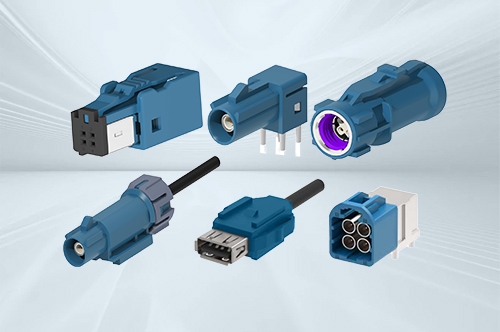In the wave of intelligent and automated transformation in the automotive industry, autonomous driving technology is undoubtedly the most eye-catching focus. From the initial assisted driving function to the current fully autonomous driving approaching L3 and L4 levels, the requirements for various sensor data transmission and communication signal interaction in vehicles have reached unprecedented heights. Behind this, Fakra connector line is quietly playing a vital role, becoming the "nerve vein" to ensure the stable operation of the auto drive system.

Fakra connector wire is a high-performance RF coaxial connector and cable assembly designed specifically for automotive applications. It originated from the development needs of automotive electronics technology, aiming to solve the reliability and stability issues of signal transmission in complex electromagnetic environments inside vehicles. Fakra connector wires have unique physical structures and electrical characteristics, standing out with their compact design, good anti-interference ability, excellent shielding performance, and stable transmission performance at high frequencies. These features enable it to efficiently route wires in limited interior space, while resisting electromagnetic interference generated by engine operation, onboard electrical equipment, etc., ensuring the integrity and accuracy of signal transmission.
In the auto drive system, the application of Fakra connector line involves several key fields. Firstly, in terms of sensor data transmission, autonomous vehicles are equipped with a large number of sensors, such as millimeter wave radar, LiDAR, cameras, etc. Millimeter wave radar requires high-frequency signals to detect the distance, velocity, and angle of surrounding objects. With its excellent high-frequency transmission performance, Fakra connector cables can quickly and accurately transmit the signals collected by millimeter wave radar to the central processing unit of the vehicle, providing data support for real-time perception of the surrounding environment. After conversion, the optical signals emitted and received by LiDAR also rely on Fakra connector wires for stable transmission, thereby achieving high-precision 3D modeling of the surrounding environment. The image data captured by the camera is massive, and the Fakra connector ensures that this image data can be transmitted to the vehicle's visual processing system with extremely low latency and distortion rate, enabling the vehicle to recognize road signs, traffic signals, pedestrians, and other targets in a timely manner.
Secondly, in the field of vehicle communication, Fakra connector wires are also indispensable. With the development of vehicle to vehicle (V2V) technology, communication between vehicles and infrastructure (V2I) has become increasingly frequent. Whether it is receiving traffic information from the road ahead or exchanging driving intentions with surrounding vehicles, stable communication signal transmission is required. The Fakra connector cable provides a reliable connection for the vehicle networking communication module, ensuring accurate and error free transmission and reception of data in complex electromagnetic environments, helping to achieve more efficient and safe traffic coordination.
In addition, Fakra connector cables also play an important role in antenna connections for autonomous vehicles. The GPS positioning antenna and 5G communication antenna of the vehicle need to be connected to the internal system of the vehicle through connector wires. The waterproof and dustproof design, as well as good mechanical stability of Fakra connector wires, enable them to adapt to the usage needs of vehicles in various harsh environments, ensuring stable reception and transmission of antenna signals, and providing reliable guarantees for precise positioning and real-time communication of autonomous vehicles.
Although Fakra connector cables have demonstrated strong performance in autonomous driving, higher requirements have been put forward for their performance with the continuous development of autonomous driving technology. In the future, with the improvement of autonomous driving levels, vehicles will be equipped with more and more complex sensors and communication devices, and the requirements for the data transmission rate, bandwidth, and anti-interference ability of connector lines will be further increased. At the same time, how to further optimize the structural design of Fakra connector wires while ensuring performance, making them more lightweight and compact to adapt to the trend of vehicle lightweight design, is also an urgent problem to be solved.
Fakra connector line, with its excellent performance, is deeply integrated into all links of the auto drive system and becomes an important basic component supporting the development of autopilot technology. In the journey of automatic driving to a higher level, the Fakra connector line will also continue to be upgraded iteratively, to continue to escort the stable operation and performance improvement of the auto drive system, and promote the development of the automotive industry towards a more intelligent and safe direction.

